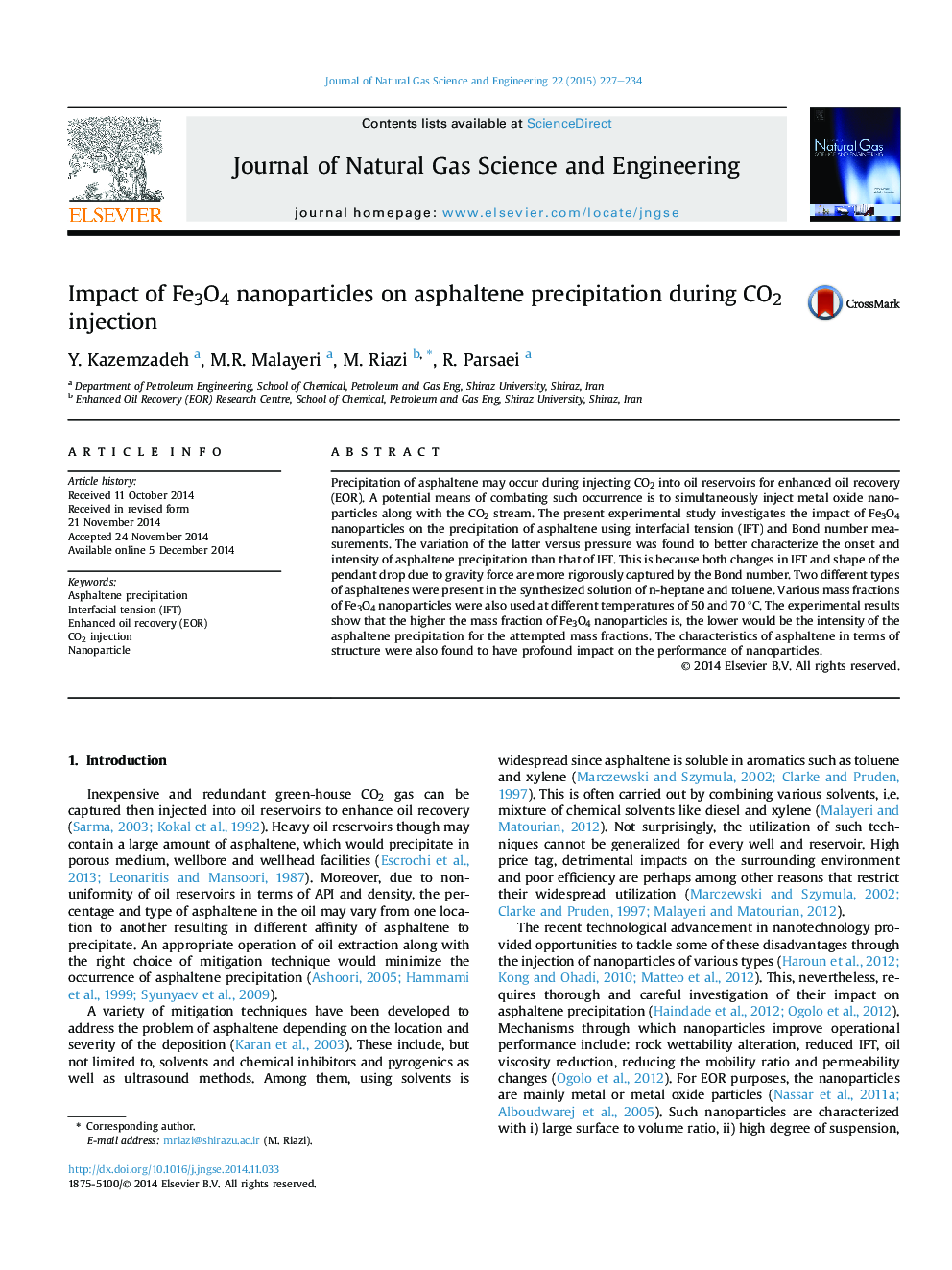| Article ID | Journal | Published Year | Pages | File Type |
|---|---|---|---|---|
| 1757806 | Journal of Natural Gas Science and Engineering | 2015 | 8 Pages |
•Fe3O4 nanoparticles caused reduction in intensity of asphaltene precipitation.•Asphaltene in terms of structure influenced the performance of nanoparticles.•Larger wt% of nanoparticles led to lower intensity of asphaltene precipitation.
Precipitation of asphaltene may occur during injecting CO2 into oil reservoirs for enhanced oil recovery (EOR). A potential means of combating such occurrence is to simultaneously inject metal oxide nanoparticles along with the CO2 stream. The present experimental study investigates the impact of Fe3O4 nanoparticles on the precipitation of asphaltene using interfacial tension (IFT) and Bond number measurements. The variation of the latter versus pressure was found to better characterize the onset and intensity of asphaltene precipitation than that of IFT. This is because both changes in IFT and shape of the pendant drop due to gravity force are more rigorously captured by the Bond number. Two different types of asphaltenes were present in the synthesized solution of n-heptane and toluene. Various mass fractions of Fe3O4 nanoparticles were also used at different temperatures of 50 and 70 °C. The experimental results show that the higher the mass fraction of Fe3O4 nanoparticles is, the lower would be the intensity of the asphaltene precipitation for the attempted mass fractions. The characteristics of asphaltene in terms of structure were also found to have profound impact on the performance of nanoparticles.
